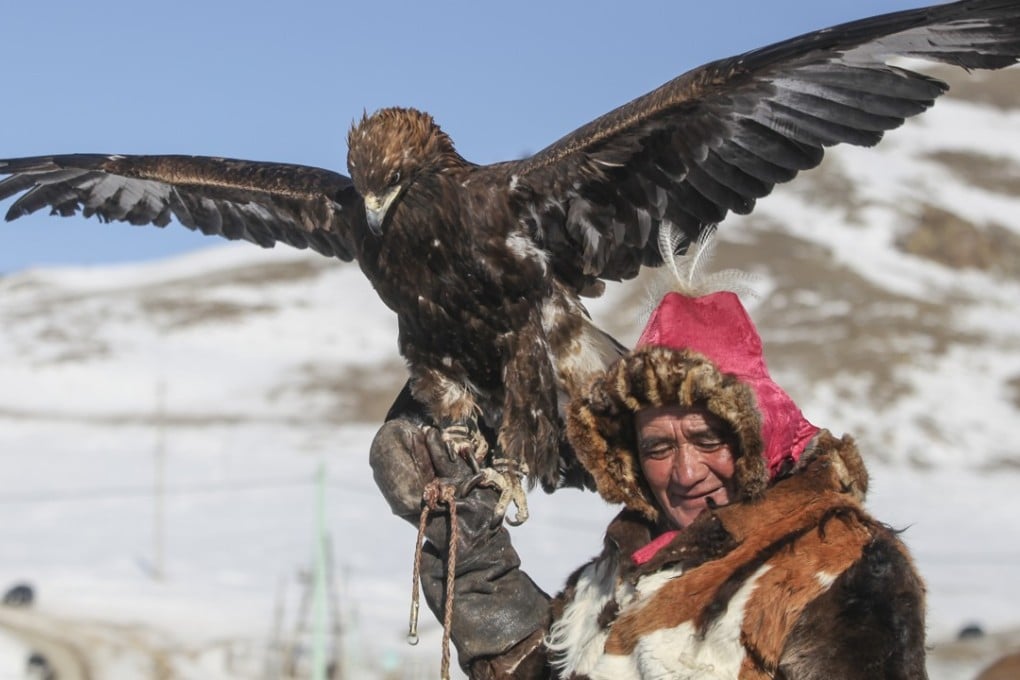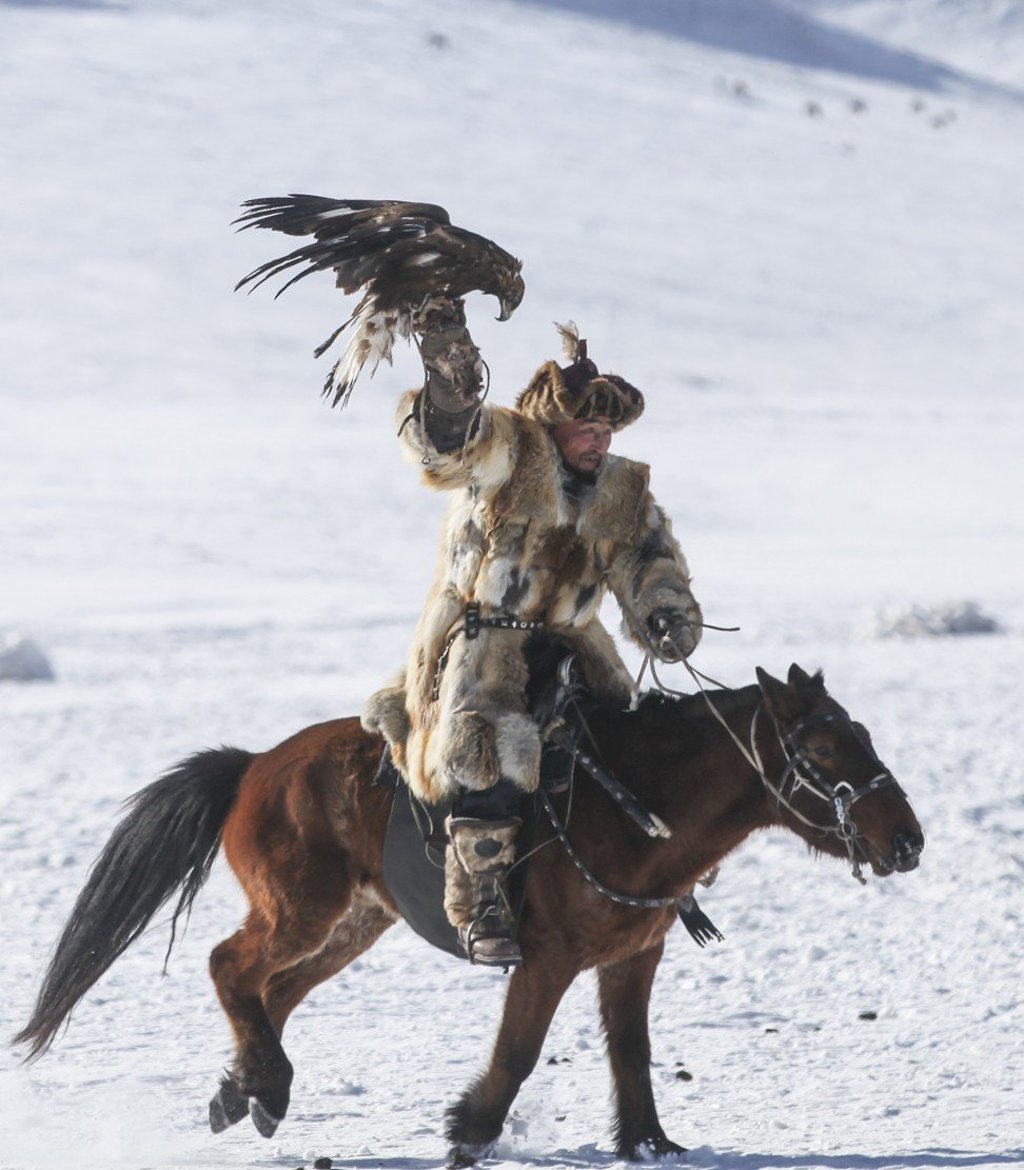Revival of hunting with eagles gathers pace in Mongolia as festivals draw more tourists to witness ancient sport
The 6,000-year-old tradition of eagle hunting among Mongolia’s Kazakh minority had almost died out 20 years ago. The launch of festivals gave it a new lease of life, and a recent film about the sport raised its international profile

Dressed warmly in fox fur coats and fur hats, the hunters arrive on horseback, carrying the national flag, and ride to the top of a snow-covered hill. They number more than 20, the youngest aged 14, the oldest 86. One by one they descend and stand inside one of two rings marked out on the frozen ground. From here, they call out to their eagles.
The majestic birds take wing on the hilltop, soar across the blue sky, and swoop down to land on their owner’s arm. Landing in the red ring gets a higher score, and the fewer times the hunters have to call out to their birds the better.

It’s an exhilarating spectacle for the more than 3,000 people who came to witness it.
Among them is American Cora Nichols, 39, who has been living in Mongolia for 18 months and who is there with her two children. “I came here because the eagle hunters are very famous, and I haven’t experienced anything similar to this,” she says.
Mongolia’s nomads: masters of their destiny in a changing world
The eagle hunters are grateful for all the attention. “Before people came to see our traditional way of life there weren’t many eagle hunters,” says Boshai Dalaikhan, 56, a soft-spoken, weather-beaten eagle hunter and herder. “Then there were only a few old hunters. But now, thanks to tourism more young people are becoming eagle hunters.”